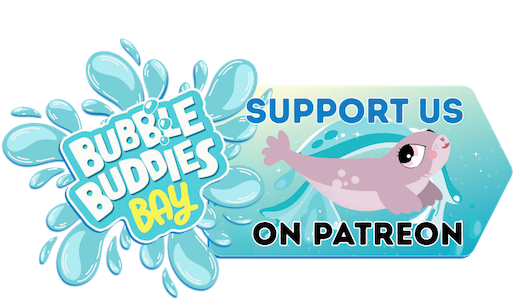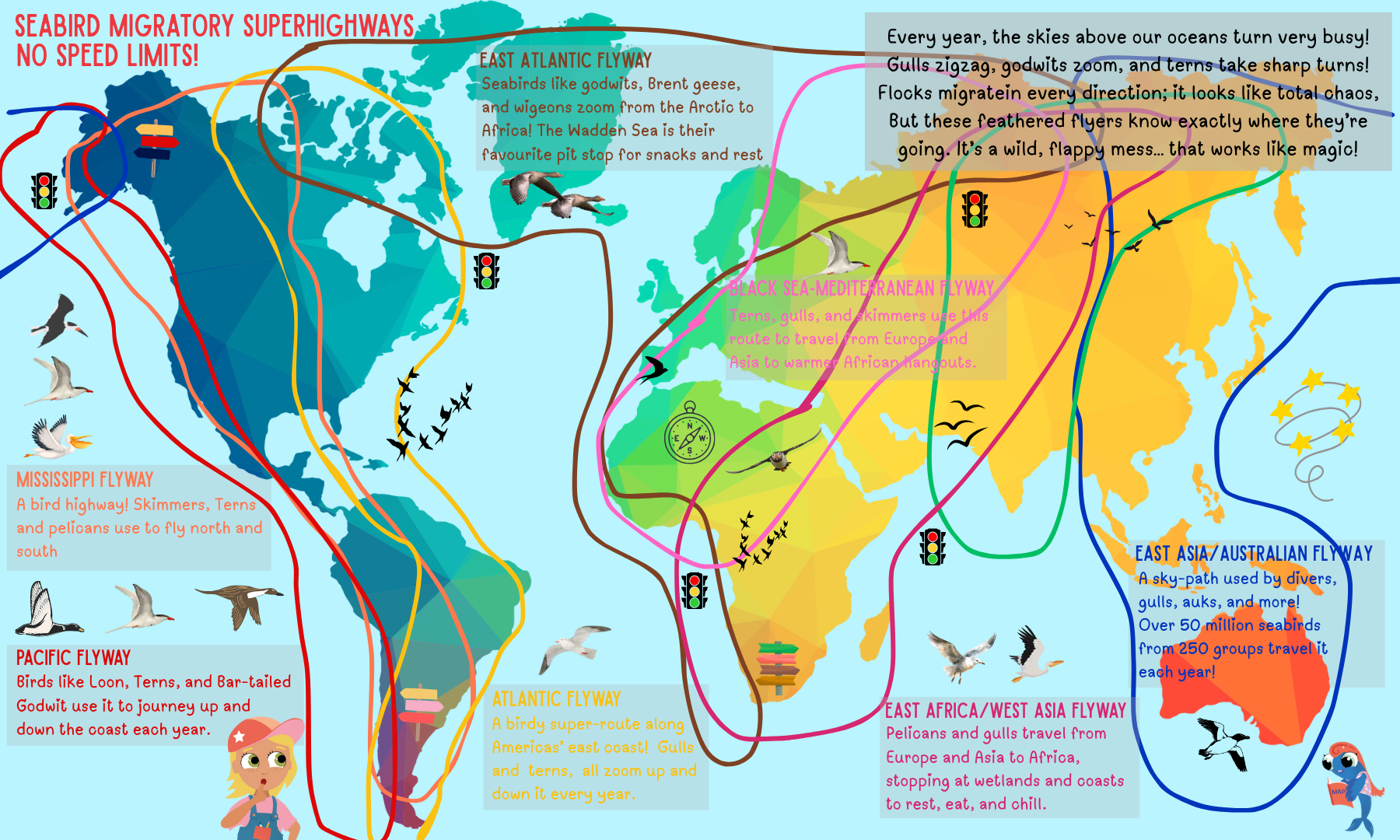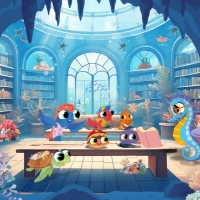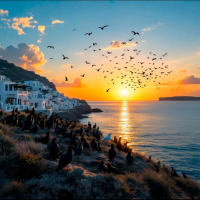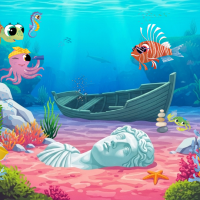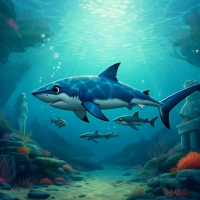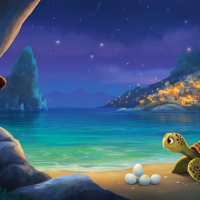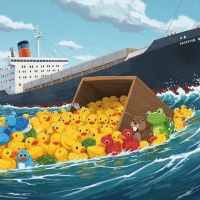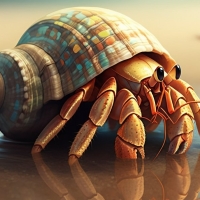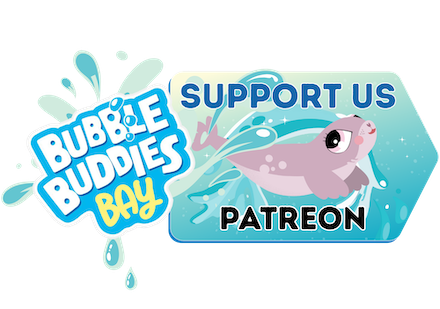
Seabirds: Dive, Soar, and Splash!
Hello, Bubble Buddies! I’m a seahorse, I paddle underwater. I don’t get to chat with feathered folk, but I have heard tales of some amazing birds that spend their whole lives at sea. They’re called seabirds, and trust me, they are brilliant.
Seabirds have cracked the code for living in one of the trickiest places on Earth: the wide, wild ocean! They've been gliding over waves since dinosaur times, helping sailors find land and fishermen spot fish. These feathered ocean flyers are proper legends.
![]()
Built for the Big Blue
Seabirds are built for adventure! Their sleek bodies help them glide through air and water with barely any drag, while their long wings (especially on albatrosses) let them soar for hours without flapping. Their beaks come in all shapes and sizes, perfect for snatching up favourite snacks like fish or squid. With super eyesight, they can spot shiny fish far below, just like feathered spies of the sea. And when it is time to dive, their strong muscles and solid bones turn them into underwater torpedoes.
Built-In Wetsuits
Feathers + Fish = Soggy disaster?
Not for seabirds: their feathers are packed tight and coated with waterproof oil they spread from a hidden body gland (uropygial gland), like waterproof hair gel they make themselves! Cosy and dry, even on the splashiest days.
Super Sight & Sniff Masters
These birds can spot shiny fish from way up high, like eagle-eyed spies of the sea and some seabirds can smell food from miles away, even tiny plankton!
Busy Bird Cities
Seabirds don’t mind a crowd. In fact, they love it! They build massive nests (called colonies) on remote islands and towering cliffs. Some are like high-rise bird towns with millions of noisy neighbours!
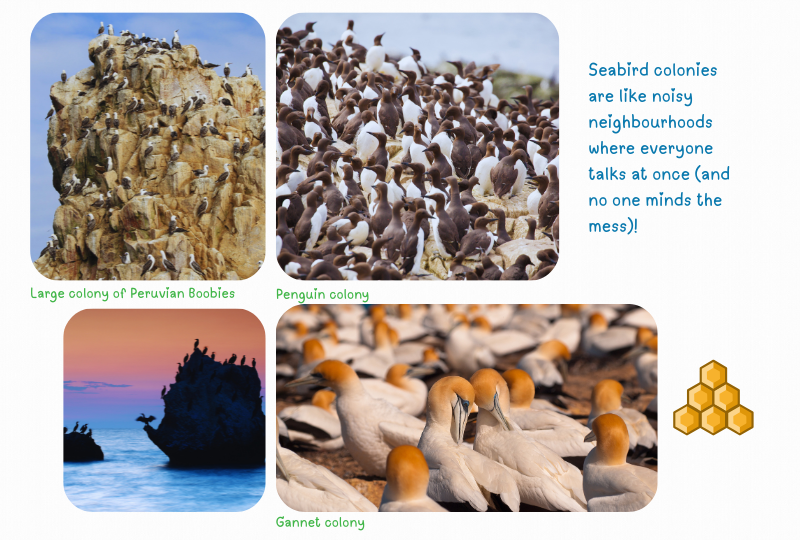
Dinner Time in Seabird Style!
These birds are seafood specialists, with all sorts of clever fishing techniques:
-
Surface Dippers: Pop their heads into the water like curious bobbing ducks.
-
Pursuit Divers: Zoom after fish underwater like feathered torpedoes!
-
Plunge-Divers: Dive from way up high - SPLASH! - like skydivers doing belly flops.
-
Camouflage Champs: Their white tummies blend with the sparkly sea from below, sneaking attack time!
Salt Sneezers
Ever accidentally swallowed seawater? YUCK! But seabirds? No problem. They’ve got a secret salt-squirting special gland above their eyes that can remove the salt, which they sneeze out through their beaks. ACHOO-SPLASH!
Flap-tastic Flyers (but Clumsy on Land)
They soar like champions and swim like fishy ninjas... but waddling on land? Total banana peels. That’s why they nest on cliffs where predators can’t reach them, and they don’t have to do much walking!
Lovebirds for Life
Seabirds are often loyal parents. Some even raise just one chick a year, with loads of cuddles, snacks, and swimming lessons.
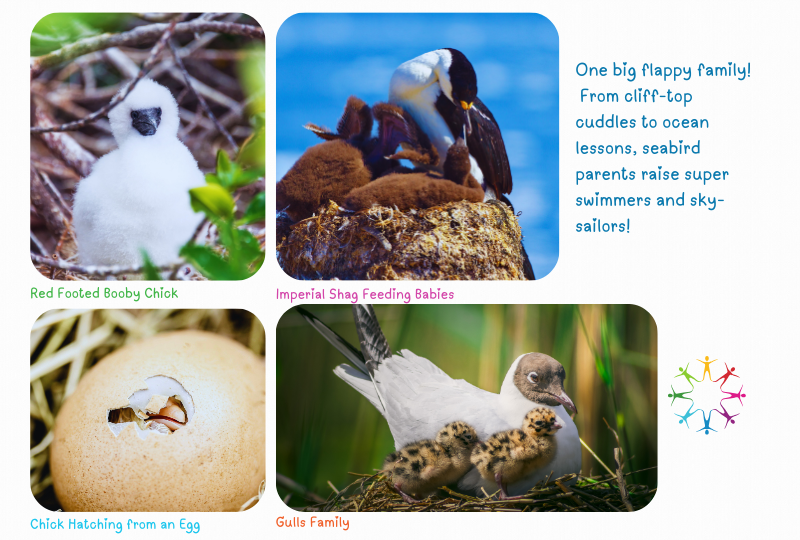
Feathery Families to Know
Petrels, Albatrosses & Storm-Petrels: Ocean Noses!
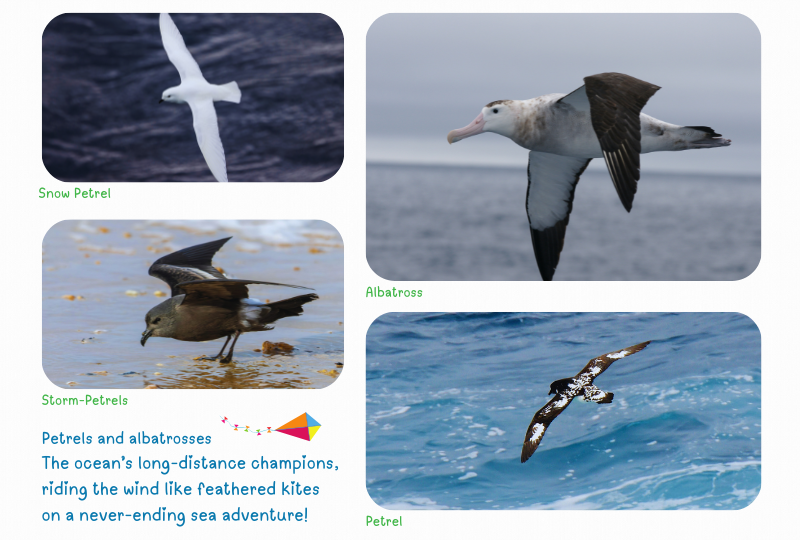
Their tube-noses help them sniff out fishy snacks from miles away.
-
Albatrosses have wings wider than your dad’s car. They fly across oceans without a flap!
-
Petrels are boat-followers hoping for crumbs.
-
Storm-petrels skip across waves like they’re playing hopscotch!
Penguins: Flightless, Not Flopless
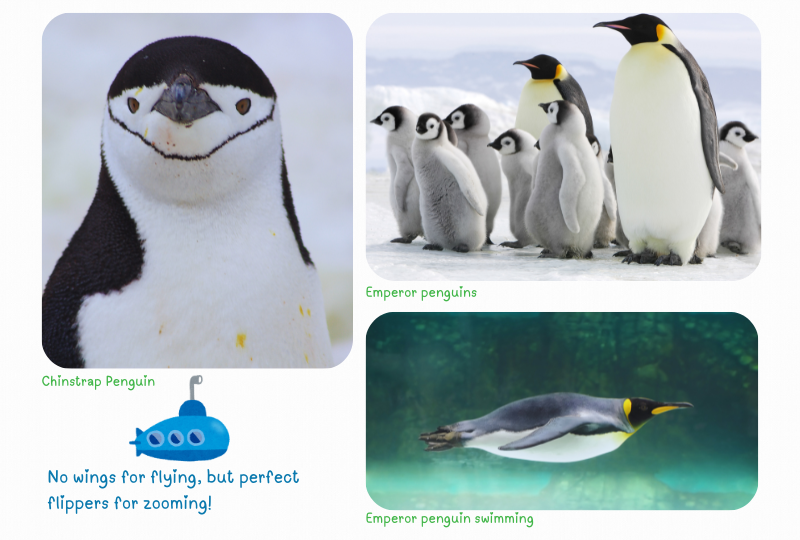
-
Penguins can’t fly, so they are stuck in the Southern Hemisphere (some in Antarctica, others on coasts and islands as warm as the Galápagos). They zoom underwater like speedy hot-dogs. Their feathers act like tiny waterproof shields, and their webbed feet work like steering wheels.
-
Emperor penguins dive deeper than most whales, 550 metres!
Gannets, Boobies & Cormorants: Divebomb Pros
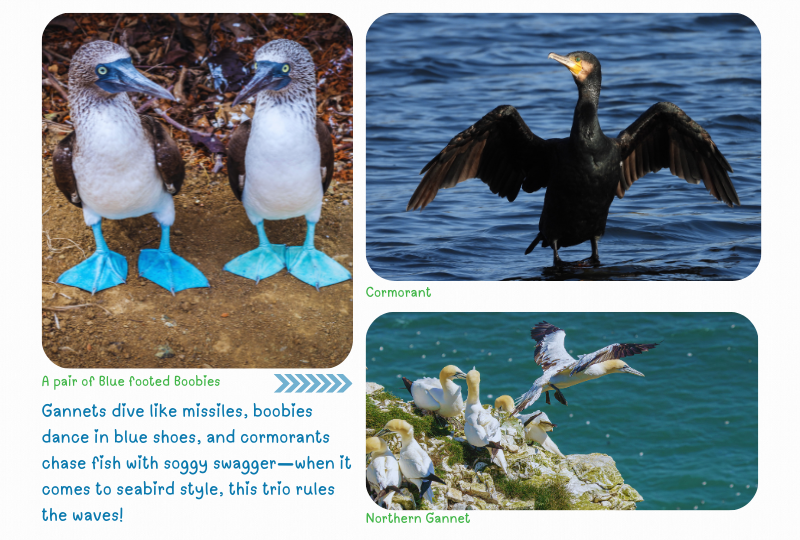
-
Gannets dive like underwater rockets. Airbags in their faces cushion the crash!
-
Boobies (yep, that's really their name!) dive in flocks and wobble on land like toddlers in rain boots.
-
Cormorants chase fish underwater and then stand around like vampires airing their capes.
Gulls, Terns & Skimmers: Clever Coast-Hoppers
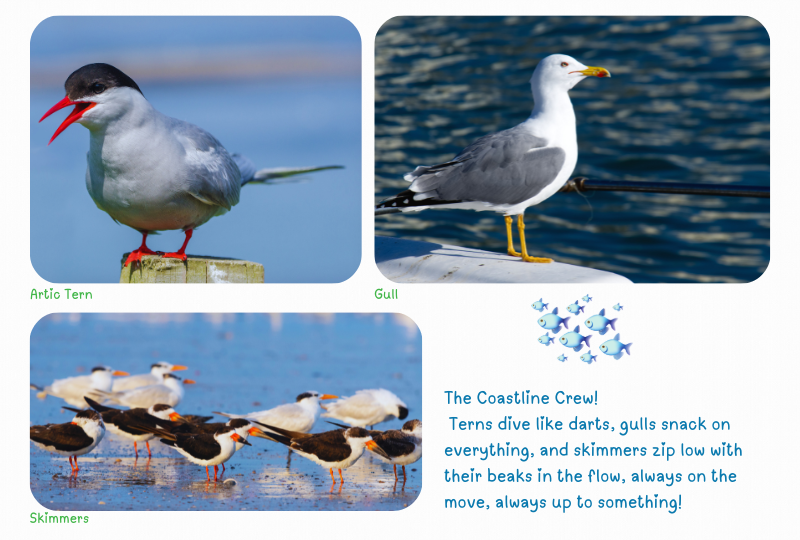
-
Gulls will nick your snack AND solve a puzzle to open a bin.
-
Terns dive with a neat plop! Some migrate all the way from the Arctic to Antarctica!
-
Skimmers fly low with their bottom beak slicing the water, slurping fish in!
Skuas & Jaegers: Pirate Birds!
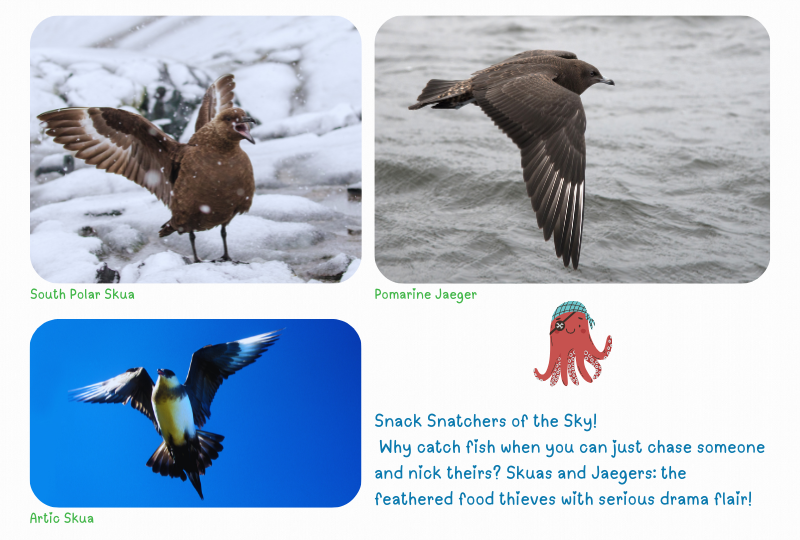
-
These sneaky sky-swoopers chase other birds to steal their snacks.
-
They live in cold places and have serious pirate vibes (but no eyepatches… yet).
Alcids: Puffins, Murres & Friends
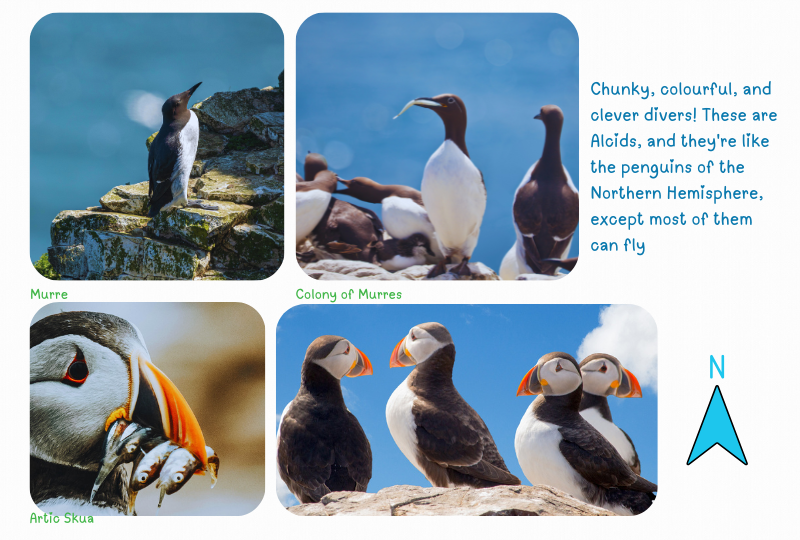
-
Puffins look like flying penguins crossed with circus clowns. Their beaks glow in the breeding season!
-
Murres dive deep and fast; FLAPFLAPFLAPGLUB!
Tropicbirds: Fancy Feathers on Parade
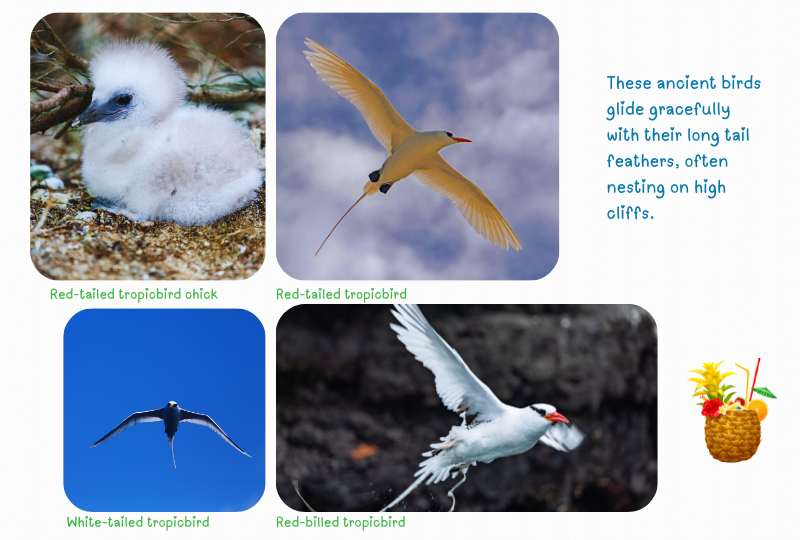
-
Long tail streamers flutter behind them like sea-ribbon spaghetti.
-
They nest in cliff hideaways and glide like ballet dancers on sea-breezes.
Marathon Migrators
Why do seabirds go on such long journeys? It’s all about food, sunshine, and baby birds! Just like some people go somewhere warm for the winter, seabirds fly thousands of kilometres to find the best nesting spots or yummiest fish.
That’s called migration, when animals move with the seasons to survive.
Some seabirds are the greatest travellers on Earth:
-
Arctic Terns win the gold medal every year! They fly from the freezing Arctic all the way to the frozen Antarctic and back again = over 70,000 km a year! That’s like flying around the world twice.
-
Sooty Shearwaters zoom in a loop around the Pacific Ocean, a staggering 64,000 km, snacking and soaring as they go.
Tricks for Birdy Travel:
-
Nature’s GPS: Seabirds use the Earth’s pull (magnetic field), the sun, and even the stars to help them find their way. No need for Maps!
-
Refuelling Stations: Underwater mountains called seamounts are perfect pit stops where they can rest and gobble up food.
-
Shorter Trips: Some seabirds stay closer to home. In the North Sea, fulmars, kittiwakes, auks, and guillemots hang around all year. You might even spot them near Dutch beaches, especially when it’s stormy!
Fishing Boats: Friend or Foe?
Seabirds have a complicated relationship with fishing boats:
Sometimes Friends: When bigger fish are caught, there's more food for seabirds' favourite snacks. Plus, many seabirds love to snap up fish scraps thrown overboard by fishermen!
Sometimes Foes: Sadly, seabirds can get tangled and drown in fishing nets. Also, when big industrial fishing boats catch too many small fish, it leaves seafowl hungry!
Ocean Helpers
-
Seabirds balance ocean life by eating just the right amount of sea creatures.
-
Their poo (YEP! guano) is full of nutrients and helps plants grow.
-
Scientists monitor seabirds regularly: If a species starts to disappear, it's a warning sign that something isn't right in the ocean, like pollution or insufficient food.
Troubles at Sea
Even seabirds need heroes. Many are in danger from:
-
Oil spills: sticky feathers, sad birds.
-
Plastic: they eat it or get tangled (YUCK!).
-
Fishing nets: they can’t always see them.
-
Lost homes: rising seas flood nesting sites.
-
Collisions: they sometimes bump into big machines like windmills.
Let’s Get Splashy! Fun Activities for You
🦢 Seabird Self-Portrait Draw yourself as a seabird! Do you have a long beak? Funny feet? Super wings? What’s your special power, fish radar? Super flaps?
🦜 Silly Seabird Dance Try waddling like a penguin, diving like a gannet, and sneezing like a petrel. Perform your routine for your family. Bonus points for sound effects!
🐦 Story Time Challenge: Create your seabird adventure. Will you sail the world or steal fish like a skua?
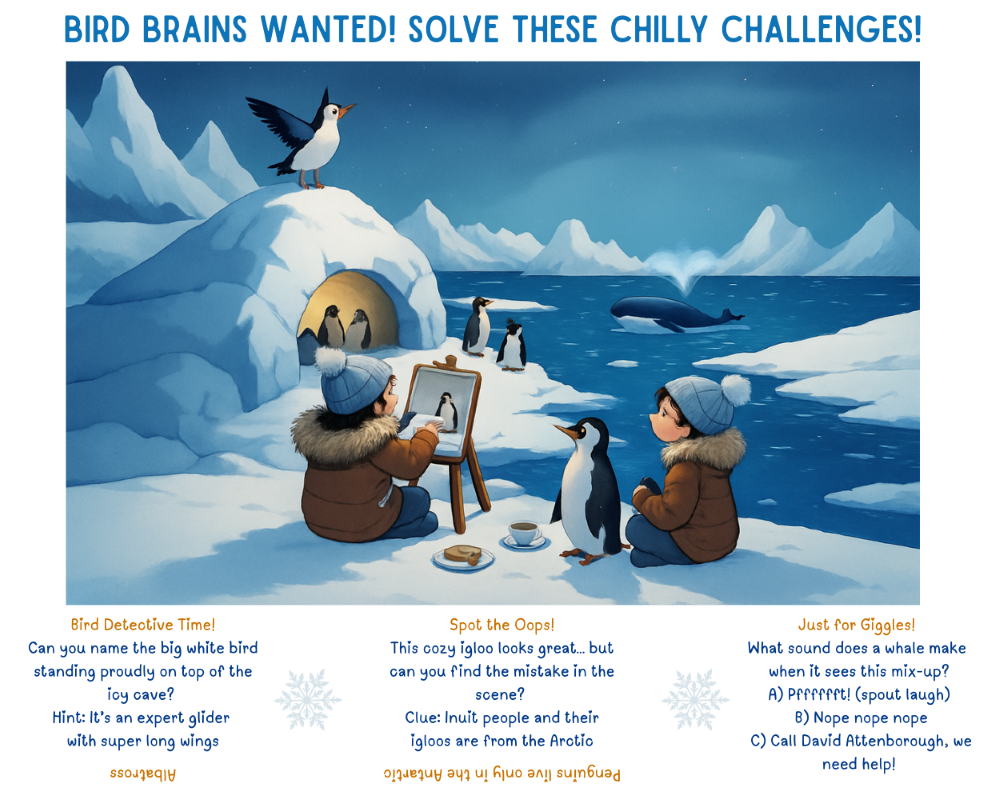
What do you think is the coolest seabird superpower, Bubble Buddy?
That’s it for now, ocean explorers, next adventure’s soon beginning!
Sophia the Seahorse
